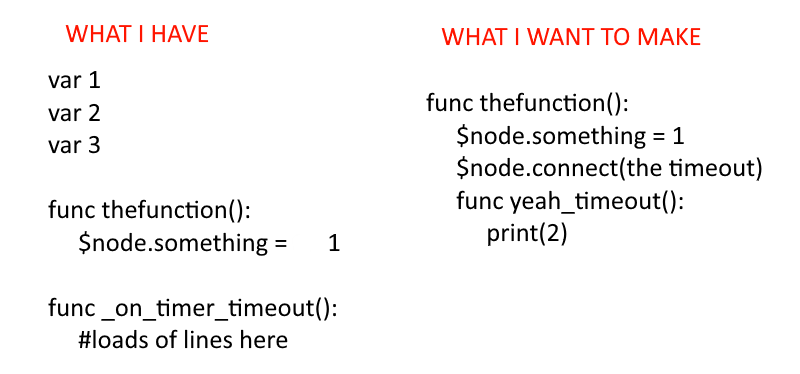Hello
I was trying to make code simpler by making a global function.
However, the process to make this took two functions and three independent variables. I wanted to integrate the variables inside the function and one of the functions inside the other, like in the drawing. But I get this error that says "Standalone lambdas cannot be accessed. Consider assigning it to a variable". Am I doing something wrong? Thanks

